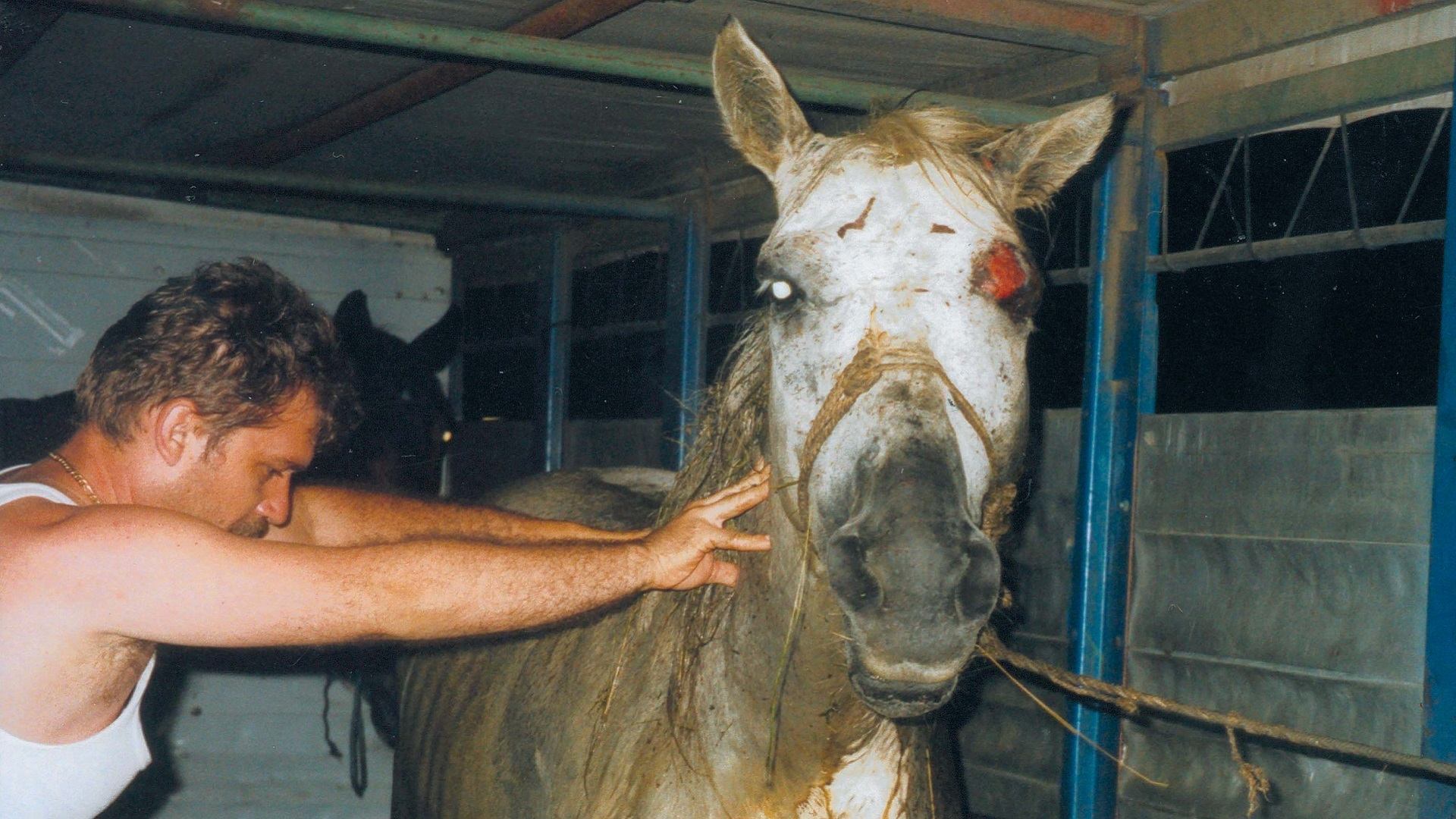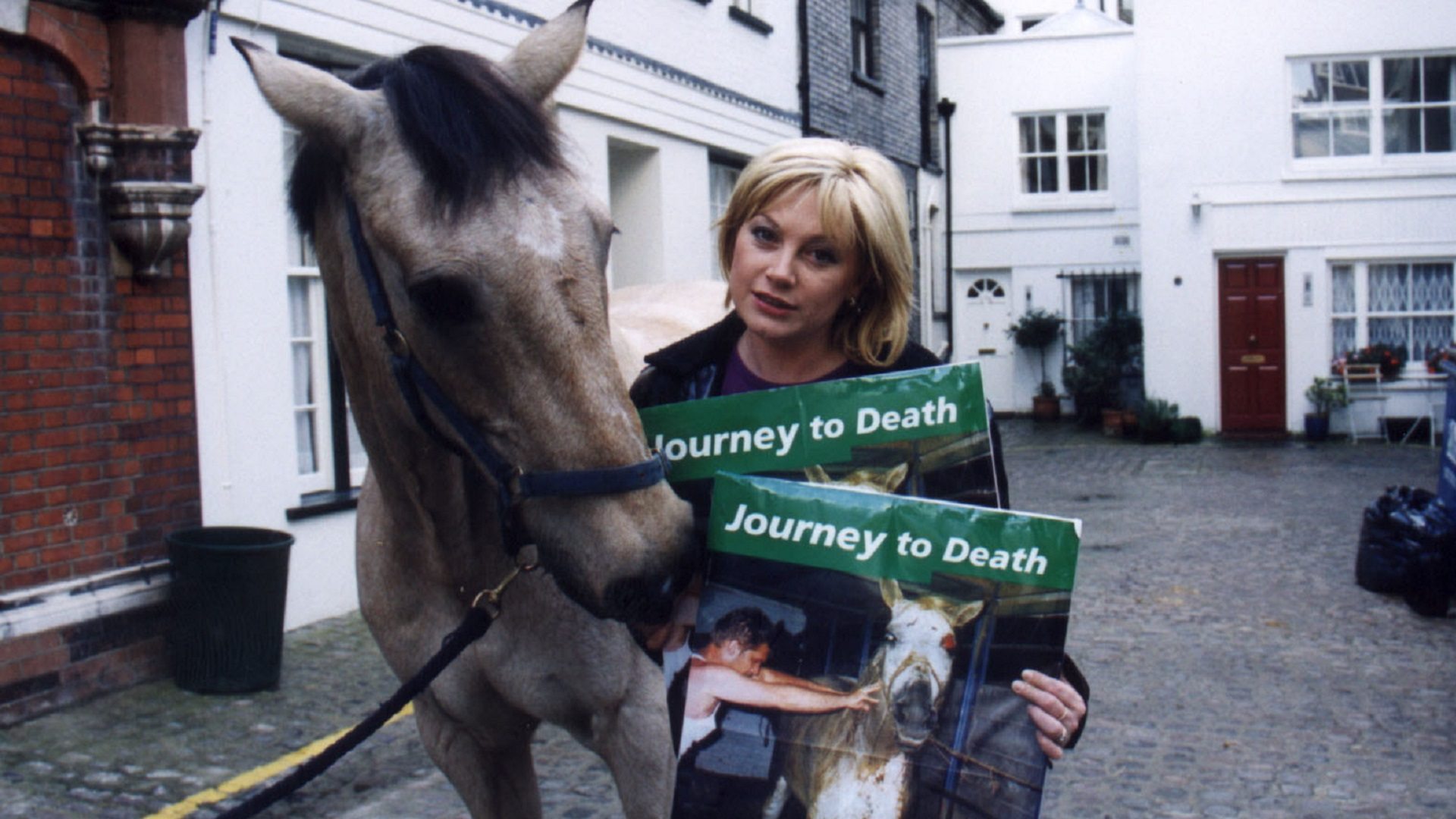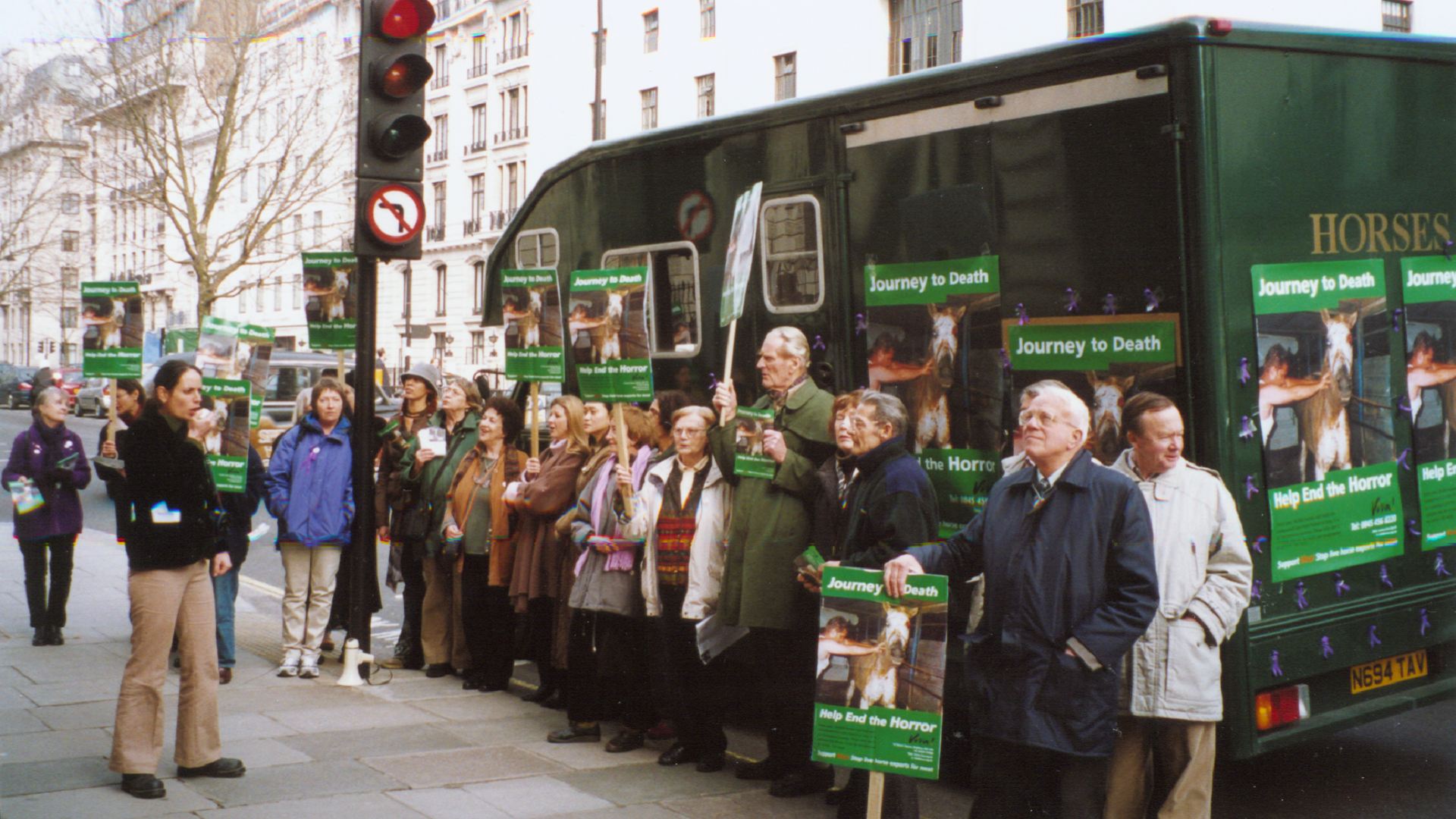Each year, around 30,000 horses are exported from Central and Eastern Europe for slaughter in Italy, France and Belgium in what can fairly be described as one of the cruellest and least regulated aspects of Europe’s live animal trade.
Poland is the biggest exporter of live horses for slaughter in Europe. Ten years ago there were one million horses in Poland but that number has now been reduced to 500,000. Nevertheless, each year, 30,000 leave Poland to be slaughtered for meat. 90 per cent go to Italy and 10 per cent to France and Belgium. Horses endure horrendously long journeys. One of the furthest destinations is Sardinia, a journey of 2500km (1500 miles) which may take as long as 95 hours. Roads are often extremely pot-holed and drivers usually travel too fast.
Where do the horses come from?
Horses of all shapes and sizes are sold for slaughter but the majority are heavy working horses, chestnut in colour and gentle in nature. Most horses are owned privately. There are also many racehorses and riding school horses. Often horses come from Lithuania and as far as Russia through Poland and on to Italy. Many horses are old, diseased, injured and even blind and because of the high demand, even fit and healthy horses, and youngsters are sold. Foals are thought to be a ‘health food’ so are highly sought after. Paperwork for horses is often false so it is impossible to ascertain horses true backgrounds. Horse theft is common, as thieves know that they can easily obtain false certificates of origin. The biggest horse market is in Skaryszew, South of Warsaw where thousands of horses are sold .
Who owns the trade?
The major registered horse traders in Poland are: Animex SA Warsaw (Owned by Smithfields Foods USA) and Cosmos Czestochowa. The average price a horse fetches is £250.
Why Polish horses?
Consumers in Italy demand vast amounts of horsemeat – thousands of tonnes. Italy’s terrain is unsuitable for horses as much of it is mountainous. Polish horses pay the price as they are relatively cheap to buy and laws and regulations are easily broken. Polish drivers are told not to water their horses. Italians demand ‘unsaturated meat’ so drivers are told that watering the horses will give them colic. This has no scientific reasoning and is a complete fallacy. There is clearly no consideration for the welfare of the horses.

The dangers the horses face include overcrowding, which can result in them falling and being trampled on. These dangers increase as the journey progresses because of the practice of loading additional horses en route through Poland.
There is a notorious lack of veterinary inspection, so by the time the horses reach the Czech border, they are often ill or injured. It is supposedly illegal to transport diseased or injured animals from Poland and these horses should be off loaded. Viva!’s investigation reveals however, that sick and injured horses are being transported and rest periods are being ignored. After just a three hour break – rather than 24 hours required by law – horses are reloaded onto the lorries to continue their last journey regardless of their condition.
From Cieszyn, the horses are trucked all the way to Slovenia through the Czech Republic and then onwards through Slovakia and Hungary. This circuitous route is to avoid the stricter veterinary controls presently in force in Austria. Although common this practice is illegal and prolongs the travelling time for many hours. The swaying trucks make it difficult for the horses to remain upright, especially when they are tightly tethered to the vehicle bars. This is carried out to stop them biting each other and is prohibited by law.
Often horses lose their balance inside the lorry and fall. Once down, they are likely to be trampled and wounded by their companions. For injured horses and smaller ponies and foals, this combination of overcrowding and lack of segregation by size can be deadly. Downed horses may be unable to rise again, resulting in their struggling desperately to regain their feet, being urinated and defecated on and stood on, often trampled to death.
Upon arrival at staging points, fallen horses are either dragged off the truck with chains or are subjected to violent treatment to induce them to stand. This can involve brutal kickings, beatings with heavy sticks or having an electric cattle prod inserted into their rectum. By the time horses reach Hungary, just half way through their journey, most are injured, exhausted and dehydrated. Some are already dying or dead.
Horses enter the EU at Goriozia in Northern Italy, on the Slovenian border, by which time increasing numbers are in an advanced stage of physical and mental deterioration or dead. Many still face long journeys – on to the west coast of Italy and onwards by ferry to Sardinia.
At the slaughterhouse
Arriving at the abattoir, horses are again brutally treated, driven are dragged into the killing factory. The normal process of slaughter is stunning – required by law – followed by throat cutting. The method of stunning is the captive bolt pistol, which drives a metal bolt into the forehead. All too often this process is ignored or done incompetently and the horses regain consciousness while their throats are being slit. Many are slaughtered in full view of their companions, which is a further contravention of the law.
Animal Welfare Act of Republic of Poland (August 21, 1997) states:
Art.5. Every animal requires humane treatment
Art.6.1. a. It is not allowed by the law to hit animals with hard and sharp objects or made to cause extraordinary pain, hitting their head, belly, lower parts of their legs.
b. Transporting animals – including farm animals , animals destined for slaughter and animals destined for market – by carrying them or making them walk in such a way that causes unnecessary suffering or stress.
Ordinance by the minister of transport and maritime economy of the republic of Poland of June 30, 1998 on specific rules and conditions of carriage animals
1. In the carriage of animals the carrier is obliged to use means of transport suitable for the given animals species and age group.
2. They should: Provide enough space for each animal, allowing it to stand or lie down;
3. Have insulated walls and roofing to protect animals against weather impact;
4. Provide sufficient ventilation, and if necessary, heating;
5. Have enough bedding material to absorb excreta and ensure animal comfort and safety;
6. To be fitted with facilities making animal feeding and watering possible and ensure access to each animal.
All these laws have been seen to be broken.
Effectiveness of EU laws
Viva!’s research shows that the EU’s Transport Directive is little more than a cynical device which allows a largely uncontrolled trade to continue without regulation, inspection or sanctions. As virtually no independent inspection is carried out throughout the entire EU, live exports are an uncontrolled free-for-all and animals crossing into the EU from Poland and other countries can expect no better welfare controls than exist in Poland. Just as Polish laws are routinely ignored, so are EU laws.
The conditions in which animals are transported demeans all those who participate in the trade and all those who allow it to happen in their name without protest. Legislators in all EU countries have quite clearly placed the profits of the livestock industry above the suffering of animals.
The profitability of this uncontrolled and unregulated trade is dependent upon defying the law. The implementation of Poland’s existing Animal Welfare Act would go a long way towards protecting the horses and would make the industry unprofitable. This in turn would cause an end to the live export of horses for meat.
There must be a proper implementation and enforcement of permitted journey times, strict guidelines for those operating the border controls and an immediate implementation of the EU Directive’s eight-hour maximum journey time by France.
Viva! believes that by campaigning in Poland and in the UK, a ban on this barbaric trade can and will be brought about. People of Poland do not eat horsemeat and are outraged about the horsemeat trade. The majority support a ban.
Did you know that horses can read humans’ emotions and remember their moods? They learn your facial expressions and remember whether you’re generally a happy, grumpy or angry kind of a person.








